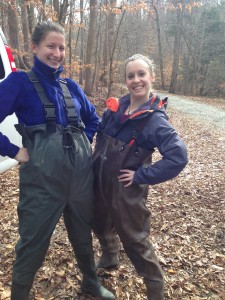When I was in undergad at Tulane, I read a paper that changed the way I looked at the environment. It also helped me decide to focus my studies on water, and I’ve cited this paper several times since then in my own writing.
The paper is called “Stationarity is Dead: Whither Water Management?” by P. C. D. Milly and other authors (2008).
What is stationarity?
The term “stationarity” refers to the “idea that natural systems fluctuate within an unchanging envelope of variability” (Milly et al., 2008). In other words, stationarity is the assumption that processes operate in the same way and at the same rate today, in the future, and in the past.
For example, think about a point in a river’s 100-year flood. This is the size of flood that, statistically, would occur at this location once every 100 years. Under the assumption of stationarity, we would assume that the size of the 100-year flood for the given location would be the same no matter what sample of years we use to calculate it.

The problem with stationarity
The paper by Milly et al. discusses the problems with assuming stationarity when we make decisions about water engineering and management. If we want to protect urban development against a 100-year flood, we might build infrastructure to hold back the amount of water associated with the 100-year flood.
If the size of the 100-year flood actually changes over time, the infrastructure that we built might not be adequate to hold back the new amount of water.
The point of the paper by Milly et al., and a suite of other papers discussing the concept of stationarity, is that we can’t assume stationarity exists anymore.
Why?
Between climate change and growing anthropogenic pressures like population growth and land use change, it is clear that the world is a changing place.
Surface runoff might increase due to development or other land use change. Sea level rise poses a threat to the quality of freshwater aquifers. Increasing rates and intensities of drought might make our regulations for the allocation of water obsolete.

One of the lessons that I’ve been learning at the Nic School has been how to manage water resources that are changing in their availability, their dynamics, and their uses.
I look forward to the chance to help forge a new path for water managers.
___
“The world today faces the enormous, dual challenges of renewing its decaying water infrastructure and building new water infrastructure. Now is an opportune moment to update the analytic strategies used for planning such grand investments under an uncertain and changing climate.” -Milly et al., 2008
___
Citation:
P. C. D. Milly, Julio Betancourt, Malin Falkenmark, Robert M. Hirsch, Zbigniew W. Kundzewicz, Dennis P. Lettenmaier, and Ronald J. Stouffer. (2008). Stationarity Is Dead: Whither Water Management? Science: 319 (5863), 573-574. [DOI:10.1126/science.1151915]
